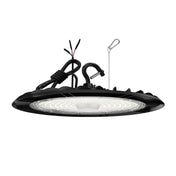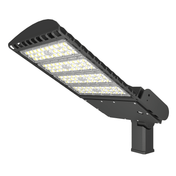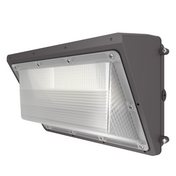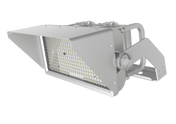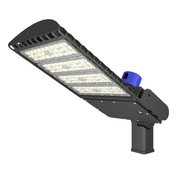High Bay Lights are installed on very high ceilings to illuminate large areas such as warehouses, commercial buildings, exhibition halls, train stations, airports, etc. There are two main differences between high bay lights and low bay lights, mainly distinguished by ceiling height, but they also have other similarities and differences.
High-bay lights are the lights used in commercial sheds. Over time, they were called high-bay lights (over 12 feet in height) and low-bay lights (under 12 feet in height). Today, an LED high-bay light is any fixture that hangs over 12 feet and has a brightness of more than 10,000 lumens. They can be round or rectangular and hang from one or two points.
High bay lighting is often the right choice whenever a large indoor space needs to be illuminated. Consider spaces such as manufacturing facilities, gymnasiums, warehouses, large department stores, factories, etc.; these facilities are often very large and cover a lot of vertical and horizontal space. This requires powerful lighting to provide the appropriate foot-candle levels to illuminate adequately. High-bay lighting fixtures are usually suspended from the ceiling by hooks, chains, or chandeliers, or they can be fixed directly to the ceiling (similar to recessed lights). The image above shows high bay lighting in action.
A variety of industries and facilities require high bay lighting. The most common are:
- Warehouses
- Industrial facilities (click here to learn more about industrial LED lighting )
- Manufacturing facilities
- School and university gymnasiums
- Municipal facilities such as community centers or recreation centers
- Commercial applications such as department stores
Choosing the Wattage of LED High Bay Lights
High bay lights are available in a variety of different wattages to suit a variety of applications and lighting requirements. In the past, the output of lights was often measured in watts because performance was very consistent across a specific wattage range from different manufacturers. This made it easy for buyers to select replacement fixtures, as well as plan the number and location of fixtures in new construction.
However, in today's market, there is a wide range of performance between manufacturers, with some manufacturers providing much more efficient lighting than others. LED lights require much less power than traditional lighting, which can also make it difficult for those familiar with metal halide and HID technology to select the correct wattage LED high bay light for their application. The following table highlights common HID wattage ranges for high bay lights and how they correspond to modern LED technology to help with selection.
Low Wattage (30-90 Watts) – These lights generally range in wattage from 30 to 90 watts. They are most popular with users who want to illuminate smaller areas in the most energy-efficient way. Most high bays in this wattage range also have the advantage of plugging into existing outlets without having to manually rewire.
Medium Wattage (100-230 Watts) – Medium wattage high bays are by far the most popular fixtures for commercial and industrial users. This wattage offers the best balance of lumen output and power consumption in most applications and is common in warehouses, commercial facilities, and manufacturing centers.
High Power High Bay (280-360 Watts) – At the top end of the wattage range, these lights provide the most intense illumination while still offering the energy-saving benefits of LED technology. They are most commonly used in stadiums, arenas, and other high-ceiling facilities that require a lot of light.
You will find 100W, 150W, 200W or even higher power LED high bay lights on the market, which can be used to replace traditional bulbs, such as 300W, 400W metal halide lamps, and HPS bulbs, which are generally high bay lights.
The wattage of industrial and mining lamps is generally between 10W and 100W, and the more common ones are 60W, 80W, and 100W.
Lumen
Choosing the correct lumen rating for your application is critical to achieving proper lighting performance and ensuring maximum return on investment. In fact, in today’s market, lumen output has replaced wattage as the primary measure of lighting performance. Considering that most people still think of lighting performance in terms of wattage, converting lumens to the primary measure of lighting output can be a confusing task. However, this will be how the lighting industry measures performance for the foreseeable future, so it is critical to understand how lumen ratings translate into actual performance.
In LED lighting, the number of lumens produced is generally proportional to the wattage of the fixture, although this varies depending on the manufacturer. Therefore, we have listed several common lumen ranges to help simplify the purchasing process:
Low Lumens (4,000-20,000) – At the lower end of the lumen range, these lamps are primarily used in applications that require high-value light with excellent energy efficiency. These lamps are typically used to illuminate small to medium-sized areas in manufacturing and commercial facilities, or non-critical areas where intense light is not required.
Medium Lumens (21,000-35,000) – This is by far the most popular lumen range and lights in this category are often used in larger venues such as warehouses and large commercial facilities. They are highly sought after for their excellent balance of lighting capabilities and energy efficiency. In addition to this, these lights are generally affordable, making them accessible to a wide range of users.
High Wattage High Bay Lights (40,000-50,000) – Lights in this category are by far the most powerful and are used in situations where maximum illumination is the primary goal. While these lights still offer the energy-saving benefits of LED technology, they consume the highest wattage of all high bay lights to provide lumen output. These lights are often used in stadiums, arenas, public spaces, and other areas that require precise and intense illumination.
Beam angle
The beam angle of high bay lamps
Common beam angles of high bay lamps are 60°, 90°, and 120°. The smaller the beam angle, the more concentrated the light, the more luminous flux irradiated to the ground, and the better the ground illumination. In contrast, high bay lamps with lower ceilings and larger beam angles have wider and more uniform light irradiated to the ground.
The luminous angle of industrial and mining lamps is generally 120°. Because the power of industrial and mining lamps is relatively small and the installation height is generally relatively low, if the luminous angle is small, many dark areas will be formed on the ground, and the uniformity is very poor. Therefore, a large luminous angle is required to make the ground illumination more uniform.
LED industrial and mining lamps generally use special lenses to achieve different angles. If a 120-degree angle is required, then a 120-degree lens needs to be selected. If a 60-degree angle is required, then a 60-degree lens needs to be selected.
Color Temperature
In addition to choosing the correct wattage and lumen output for your application, it is also important to determine the correct color temperature. This will depend on the overall purpose and goals of the lighting. Certain color temperatures are better for ensuring worker focus and efficiency, while others are better for relaxation and creating a positive mood. Below we have summarized the most common color temperatures in high bay lighting today to assist in the purchasing process.
5000K – 5000 Kelvin LED high bay lights are by far the most common. This color temperature projects a cool white lighting that simulates a daytime environment. This is ideal for general lighting in warehouses, manufacturing facilities, and other commercial spaces that require precise lighting. This color temperature is also best suited for high CRI lighting, as it is the most natural of all the color temperatures.
4000K – 4000 Kelvin LED bulbs project a natural color light that is commonly seen in the workplace. While these bulbs are generally less common than 5000K high bay fixtures, many electrical contractors and building managers still prefer this color temperature. This is because it gives a warmer feel and is very similar to the color temperature of traditional lighting such as HID and fluorescent lighting. As a result, 4000K high bay lights are ubiquitous throughout the LED lighting market.
3000K – 3000 Kelvin is a warm-colored LED light that is primarily used in restaurants or inside houses. It is rare to see 3000K LED bulbs in high bay fixtures because these lights are designed for large buildings, such as warehouses and commercial gyms, rather than residential or hospitality lighting applications.
Conclusion
LED high bay lights are ideal for any application that requires bright, efficient, and durable lighting. They can save you up to 80% in energy costs compared to traditional high bay lights and have a lifespan of 50,000 hours or more. They also offer better color rendering, dimming capabilities, and instant-on performance.
There are different types of LED high bay lights to choose from, depending on your needs and preferences. You can choose circular, linear, or strip lighting, which comes in different shapes, beam angles, and mounting options. You should also consider the light's lumens, color temperature, CRI, and IP rating, which affect the brightness, color quality, and durability of the lighting.
To find the best LED high bay light for your space, you should consult a lighting expert who can help you calculate the optimal lighting level, select the right type of fixture, and install it correctly. A lighting expert can also help you with other aspects of your lighting project, such as design, layout, wiring, and maintenance. By working with a lighting expert, you can ensure you get the most out of your LED high bay lights.


